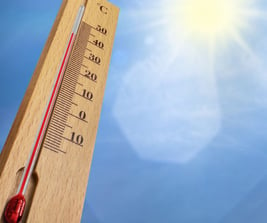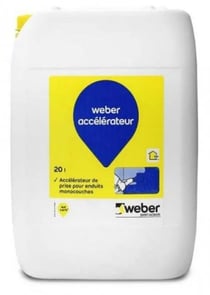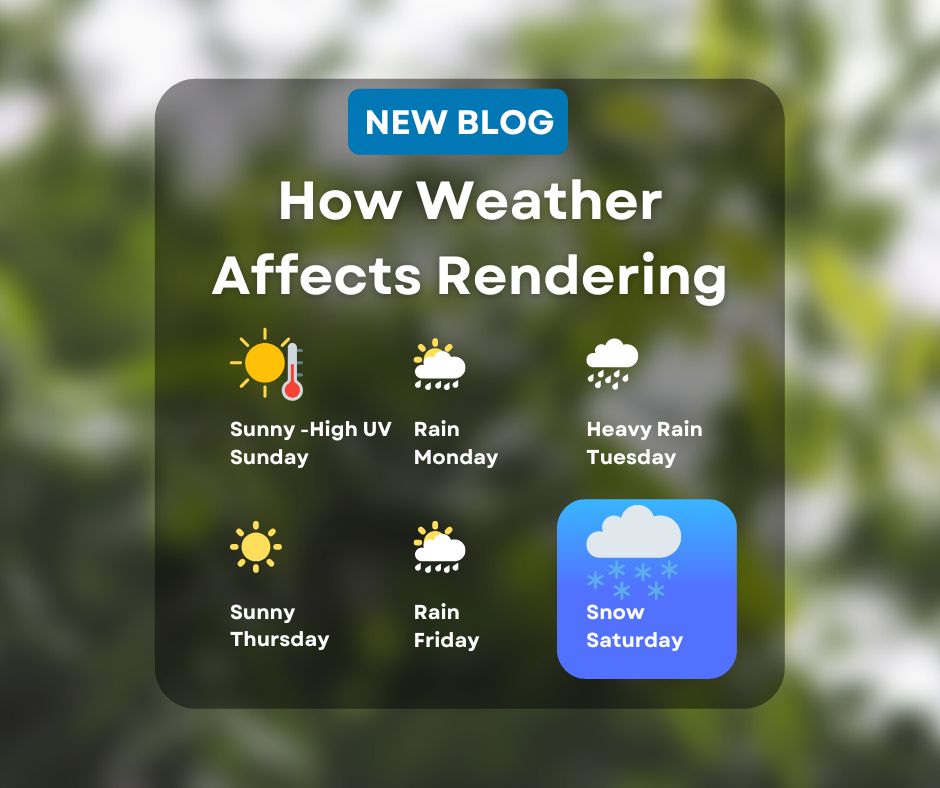Render Season
We frequently talk about ‘render season’, however with the UKs unpredictable weather, is there really such a thing? As with everything there are preferable conditions but the weather is out of our control so if you waited for that elusive ‘perfect’ day, you’d quickly find yourself out of work.
With global warming having a big impact on our weather, we’re noticing real extremes, which are the times to avoid. As a general rule of thumb, render should be applied between 5-25°C with no rain, wind, extreme-humidity, snow or frost. This is because render is a cementitious product so when freshly mixed it is affected by temperature, moisture and air.
 Of course, the variable English weather can make planning challenging especially when trying to stick to budgets and time schedules. It’s always worth checking the weather forecast to avoid those real adverse conditions and of course ensure you really understand your product and have carefully read the instructions and limitations since all products vary. So here are our top tips for continuing work during the erratic Great British weather and let’s face it, we’re British so a weather conversation is high on our agenda, here goes…
Of course, the variable English weather can make planning challenging especially when trying to stick to budgets and time schedules. It’s always worth checking the weather forecast to avoid those real adverse conditions and of course ensure you really understand your product and have carefully read the instructions and limitations since all products vary. So here are our top tips for continuing work during the erratic Great British weather and let’s face it, we’re British so a weather conversation is high on our agenda, here goes…
How does Hot weather Affect Render?
When the heatwave hits rendering dips. If you apply render in temperatures exceeding 25/30°C or in direct sunlight, problems can occur. Extreme heat will cause render to dry too quickly causing

cracking, damage and a patchy finish. High humidity (above 90%) can also have an effect, slowing down the curing time and retaining moisture within the render. Hot, dry weather will mean the substrate you are applying to is also incredibly dry and ready to instantly absorb any moisture that it can. This means it will literally suck the moisture from your render and cause it to crack as it cures. UV rays can also have an impact on finished render and over time will cause the colour to fade as the pigment weakens leading to flaking.
How can you continue working in hot weather?
 Prepare to be flexible in extreme weather; you may need to alter those contracted hours. Starting to render before the sun has fully risen (yes, this may mean 5am starts) will avoid the really warm hours of the day towards midday and the afternoon. Work with the sun applying your material to walls in the shade and follow the sun around the building so you are always in the shaded areas. You could also use covers to provide shade. To prevent the substrate sucking all the moisture from your product, apply a water-based primer. Finally embed fibreglass mesh to your basecoat layer or monocouche which will increase the tensile strength and stop cracking as it dries and shrinks.
Prepare to be flexible in extreme weather; you may need to alter those contracted hours. Starting to render before the sun has fully risen (yes, this may mean 5am starts) will avoid the really warm hours of the day towards midday and the afternoon. Work with the sun applying your material to walls in the shade and follow the sun around the building so you are always in the shaded areas. You could also use covers to provide shade. To prevent the substrate sucking all the moisture from your product, apply a water-based primer. Finally embed fibreglass mesh to your basecoat layer or monocouche which will increase the tensile strength and stop cracking as it dries and shrinks.
Cold Weather Render Problems
 As well as those cold fingers and toes caused by the British winter, your render doesn’t enjoy the chillier months. Temperatures below 5°C, frost and rain can really compromise the finish of your render and lead to issues. When the weather is too cold, render will not cure quickly enough so as well as holding up projects, the render will retain moisture and leave it susceptible to further damage. Frost and render certainly don’t mix since the water in the render can crystalize. You may also come across lime bloom in colder weather where render has been exposed to damp or low temperatures at an early curing stage. This can create a thin film of white (lime bloom), which whilst it doesn’t affect the structural dependability of the render, it doesn’t look particularly nice (see image above). Slower drying times also gives more opportunity for top coats to be washed off as they rely on evaporation to set and provide that durable finish but as time ticks on and it remains wet/damp this top coat can be washed away. Rain will also lead to inconsistencies in colour and texture as well as causing problems with the bond between coats. Hairline cracks can also develop and worsen during winter since the cooling and thawing process of frost/rain means continuous expansion and contraction leading to larger cracks which subsequently allow in rainwater causing water damage and render separation.
As well as those cold fingers and toes caused by the British winter, your render doesn’t enjoy the chillier months. Temperatures below 5°C, frost and rain can really compromise the finish of your render and lead to issues. When the weather is too cold, render will not cure quickly enough so as well as holding up projects, the render will retain moisture and leave it susceptible to further damage. Frost and render certainly don’t mix since the water in the render can crystalize. You may also come across lime bloom in colder weather where render has been exposed to damp or low temperatures at an early curing stage. This can create a thin film of white (lime bloom), which whilst it doesn’t affect the structural dependability of the render, it doesn’t look particularly nice (see image above). Slower drying times also gives more opportunity for top coats to be washed off as they rely on evaporation to set and provide that durable finish but as time ticks on and it remains wet/damp this top coat can be washed away. Rain will also lead to inconsistencies in colour and texture as well as causing problems with the bond between coats. Hairline cracks can also develop and worsen during winter since the cooling and thawing process of frost/rain means continuous expansion and contraction leading to larger cracks which subsequently allow in rainwater causing water damage and render separation.
How to continue working in cold weather
Render accelerator is a superb product to invest in during the colder months and will speed up drying

times. It is a liquid additive used in place of a portion of the gauging water within your render and will allow you to achieve a render finish as you would on a 20°C summer day even if it is really a 5°C winter day. Winter adhesive is another useful product that is designed for colder weather and will give you confidence in achieving a strong, crack-free surface. Of course, there are also practical solutions such as protecting the area using a scaffold enclosure with polythene or tarpaulin. This will protect a newly finished render, allow protection during application particularly if there is rain forecast and may also increase the temperature. Remember frost and render definitely don’t mix so if your material or substrate is frozen, reschedule for another day or use suitable protection and heaters to increase the air temperature.
Hiring or Buying a Rendering Machine at CES
CES rendering machines are available to buy and hire at any time of the year since as we said there isn’t really a ‘render season’ and you can make weather adaptations throughout the year. However, there is certainly a busier time of year, when the weather picks up from March onwards, make sure you book in your machine hire earlier to secure the machine you want. Machines like the Euromair MixPro 28 are incredibly popular little rendering machines and get booked out very quickly in those spring and summer months so it’s worth planning ahead. Call us on 01494 715472 to order rendering supplies and to hire the machine you want today.




